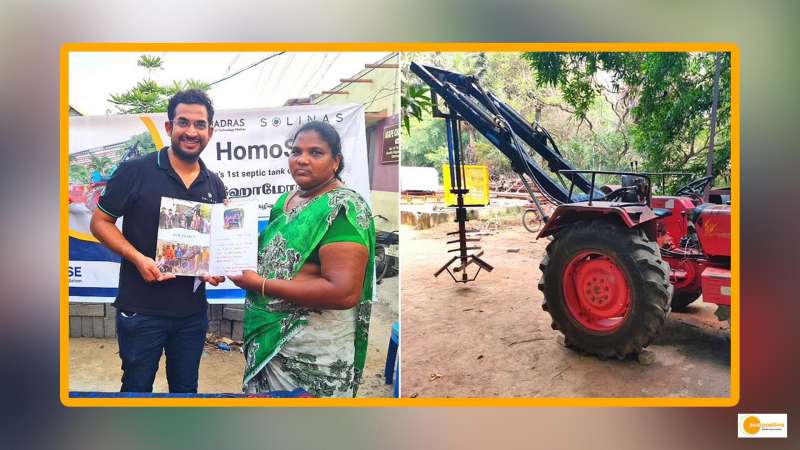

Nagamal, 45, a widow of a manual scavenger, is enthusiastically learning to operate a robotic septic tank cleaning machine at an IIT Madras workshop. She’d soon become an entrepreneur in Chennai, using this robotic technology called HOMOSEP to clean septic tanks.
Her husband Kannan died inhaling poisonous gas when he got into a septic tank to clear the sledge twenty years ago. With two daughters life was difficult. Now she has roped in two others for her new venture after struggling as a housekeeping worker for more than a decade. She told “I am so happy that the first machine is given to me. I am so proud that with this I’d be able to save lives of say ten people.”
Since 1993, over 900 people involved in manual scavenging have died as a result of asphyxia while cleaning septic tanks. Solinar, an IIT Madras start-up, developed this robotic system mounted on a tractor in consultation with local communities after being commissioned by Safai Karamchari Andolan for a tech solution.
Robotic arm with movable blades
The robotic arm with movable blades reaches the bottom of the septic tank, crushes the sludge, mixes it, and pumps the slurry out, removing the need for manual intervention.
Professor Prabhu Rajagopal, from the Department of mechanical engineering who is also a Co-Founder says, “Every district should have a designated set of self-help groups who will get these machines and then get the cleaning contracts. Thus the problem can be eliminated forever. Once the stigma also goes away then anybody can come in and take these jobs with these machines, do the job with dignity and earn their livelihood.”
Founded by a team of students and a faculty member at IIT Madras, the machine costs around ₹ 20 lakh. CSR (Corporate Social Responsibility) funding helps many like Nagammal to own the machine. The team is also working on a compact model. Divanshu Kumar, CEO of Solinar, the startup said, “In the current compact version we are imagining that the de-sludging system, suction as well as the storage tank all can be fitted in one vehicle itself, that will make it very modular to take it even to far away places.”
For centuries, a few scheduled caste communities were forced to engage in manual scavenging, which violated human rights and dignity. Widows of victims, as well as women’s self-help groups, are now establishing businesses to provide a dignified and empowered livelihood.
Creates huge history
Ms Deepthi Sukumar, National Core Team Member, Safai Karamchari Andolan says, “Owning a technology that’s giving a solution to this itself creates a huge history. For a person like Nagammal and Ruth Mary, everything changes for them. Their social status, their own self-confidence, their self-respect and dignity, everything is changing.”
It is not rocket science but after 75 years a technology has emerged that could stop people from engaging in manual scavenging, restore human dignity and economically empower them. Many hope local bodies would adopt this technology to fasten the process of transition.
Also Read: Scientists have unveiled a robotic fish that removes microplastics from the seas and can heal itself


